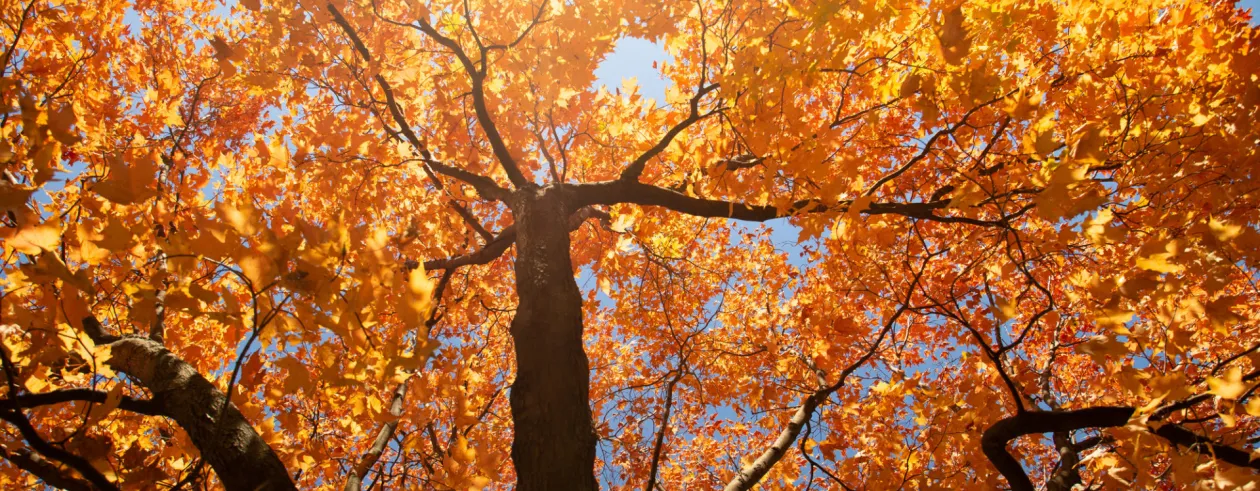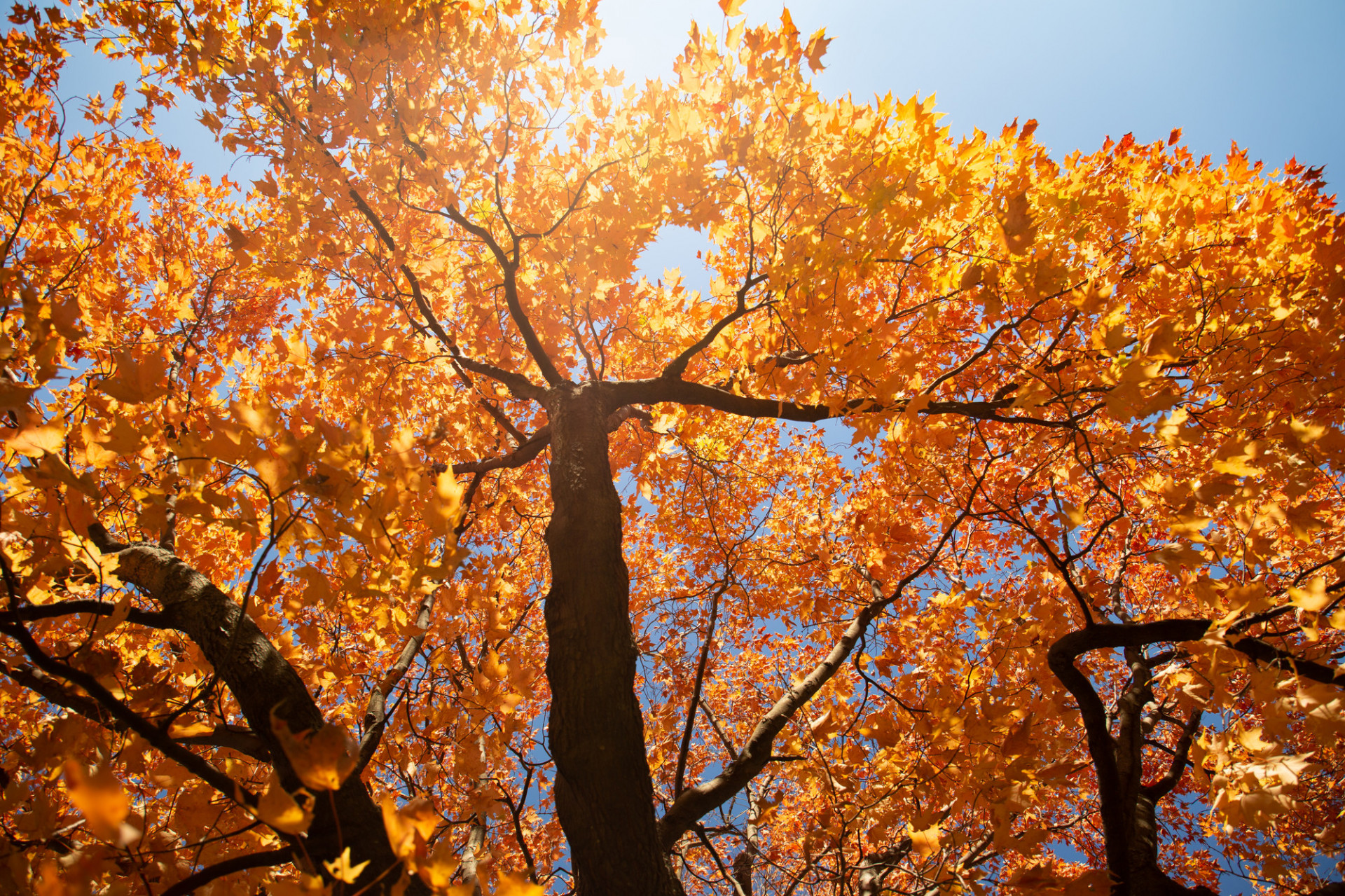
It’s the most wonderful time of the year! No, it’s not December; Santa won’t be coming for awhile. It’s March, which can only mean one thing: maple!
For the North and Rust families of Conifer, NY, maple is a way of life. For four generations the maple syrup production process at North-Rust Syrup hasn’t changed much, keeping with tried and true traditions that celebrate craft.
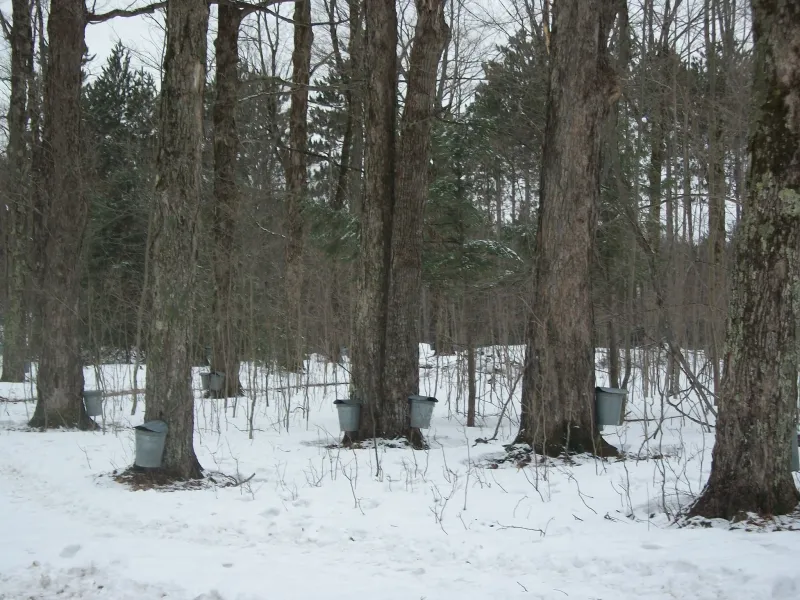
The sweet spot
Maple syrup has a long history in the United States. Did you know that just outside Tupper Lake once existed the largest sugar bush in the world? In 1898, the ingenious Abbot Augustus Low (famously known as A.A. Low today) built his first sugar house for the Horseshoe Forestry Company. At its peak in 1907, his maple empire was producing about 20,000 gallons of syrup. You can learn more about A.A. Low and his crafty inventions that are still used today at the Piercefield Museum.
Tradition
For some people, their maple syrup’s backstory isn’t important. This is not the case at North-Rust Syrup. Here, things are done the old-fashioned way. Before relocating to Conifer, North-Rust Syrup managed a sugar bush in Harrisville, NY, located just outside the Adirondack Blue Line about an hour away from Conifer. Earlier generations used horses to haul equipment and sap around the property. Today, a tractor and skidder are used to pull a 275-gallon storage container, though family member Jay Rust would love to bring horses back into the mix. Even with a tractor, the process of obtaining sap is no less labor intensive.
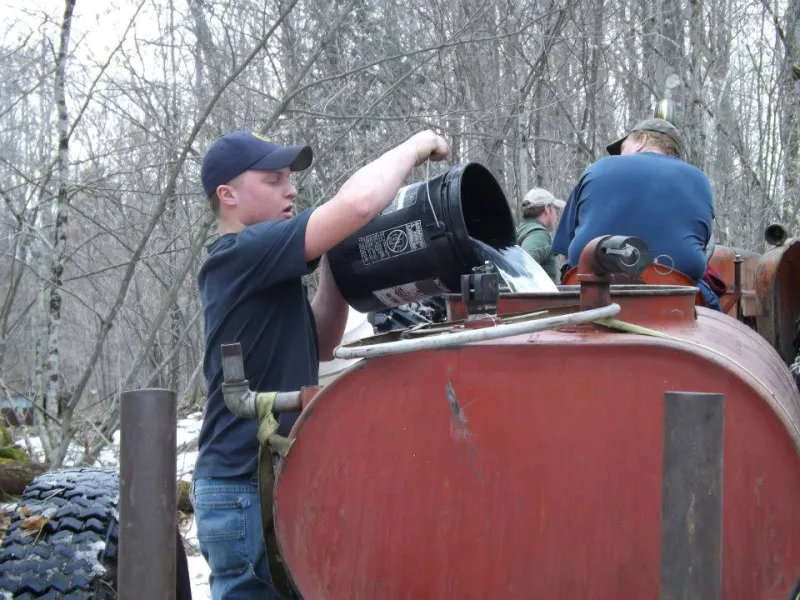
You’ve likely driven by a sugar bush and seen the IV-like tubing stretching from tree to tree. That’s not how North-Rust Syrup does things. Buckets are used by Jay and family to collect sap instead of the more modern tubing. This creates more work (each bucket needs to be individually emptied) but the end result is so worth it. There is something so incredibly authentic and unadulterated about keeping with tradition. After sap is collected from the buckets and transported to the sugarshack, it then goes to the evaporator (an invention from the mind of A.A. Low). This machine plays an important role, but, mostly noticeably, it disperses the wonderfully sweet maple aroma into the air via a cloud of steam. As the water evaporates, sap thickens and caramelizes to create the liquid gold we all dream of.
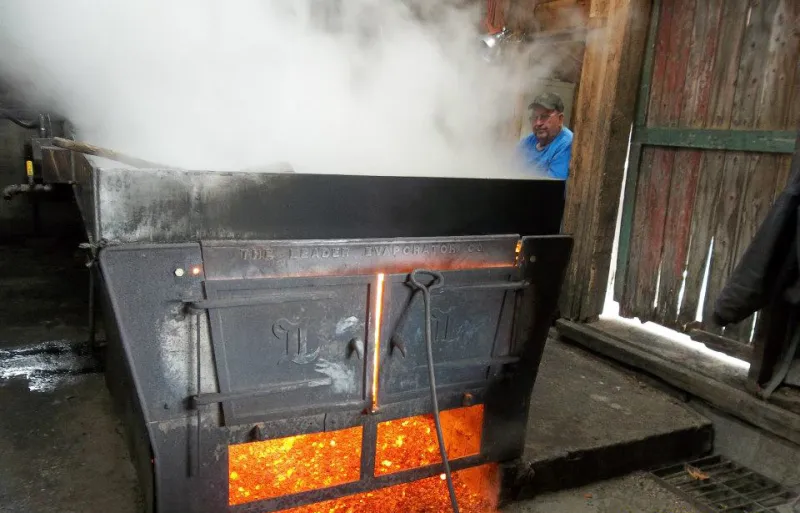
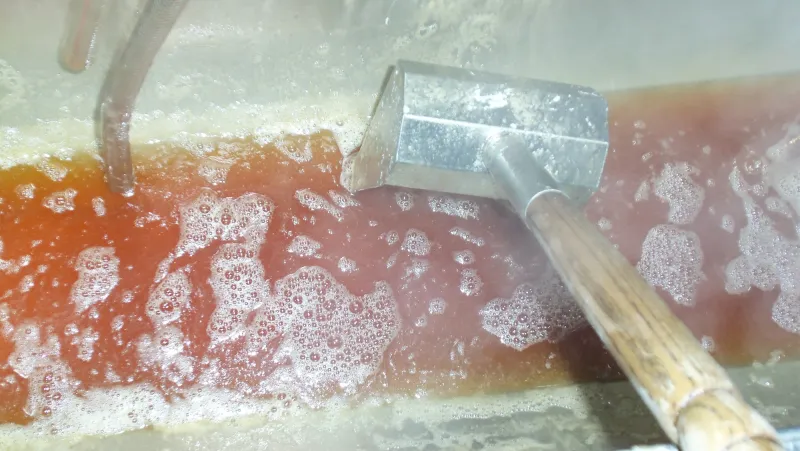
Time
By nature, maple season is unpredictable. Those who tap trees have to be adaptable and ready to go at a moment’s notice. Weather plays a huge role in this process. When the nights are cold and the days are warm, North-Rust Syrup comes alive. These are the conditions in which sap flows. Several weeks of this freeze and thaw cycle is ideal. Cold nights are what stop buds from forming. Buds might be a welcomed sign of the forthcoming spring, but they mean an end to maple season. (When buds expand, sap becomes off-flavored.)
Angela Fox Rust said that once a tree is tapped, you hope it will run in a few weeks. If not, the wound might heal and close up. It might be a guessing game, but the people at North-Rust Syrup have gotten good at it. Angela said she can only remember one time when trees were tapped in February; it’s mostly done in March. Moving operations from Harrisville to Conifer has also meant a downsize. The previous sugar bush had paths well-worn from years of use, but North-Rust Syrup is expanding their current footprint in Conifer each year.
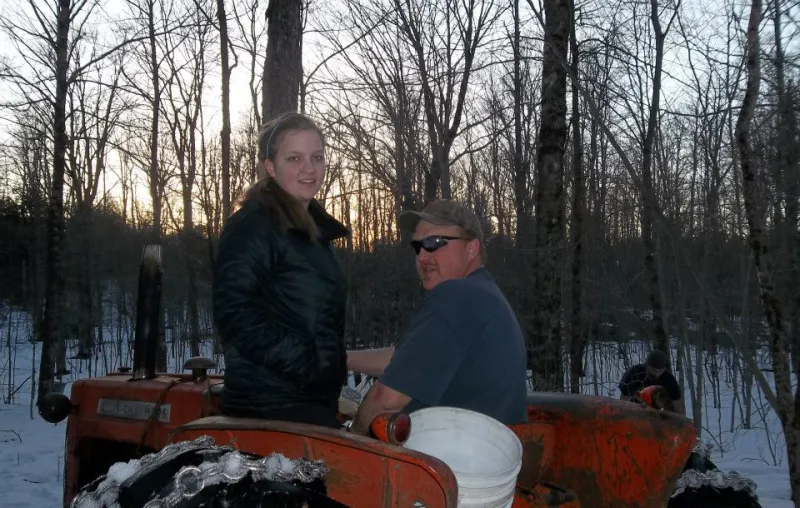
Even with thousands of taps, many hands make for light work at the sugar bush in Conifer. Since first generation John R. North starting producing syrup, this has been a family operation. Raymond North, born in 1939, has been an essential part of the operation for many years. His knowledge and experience is simply incredible. Two of Jay and Angela’s children, Michael and Allison, and niece, Isabella, also help out. Since tapping the trees is a time sensitive endeavor, help can be hard to rustle up at the last minute, but whenever they are available, cousins and other family members also pitch in. Sometimes students from Clifton-Fine and Tupper Lake Central schools offer to lend a hand.
Community
Angela let us in on a little secret, something that sets North-Rust Syrup apart from other sugar bushes. If you order maple syrup from North-Rust, it will be hand-delivered to your door, another tradition the family has kept with over the years. The family says this helps form a real sense of community. Angela says she loves going on deliveries and sometimes will spend 30 minutes chatting with people she might only get to see once or twice a year. But, ultimately, the best part about locally-made maple syrup is seeing someone’s face light up when they first sample it. There truly is nothing like fresh, pure maple syrup.
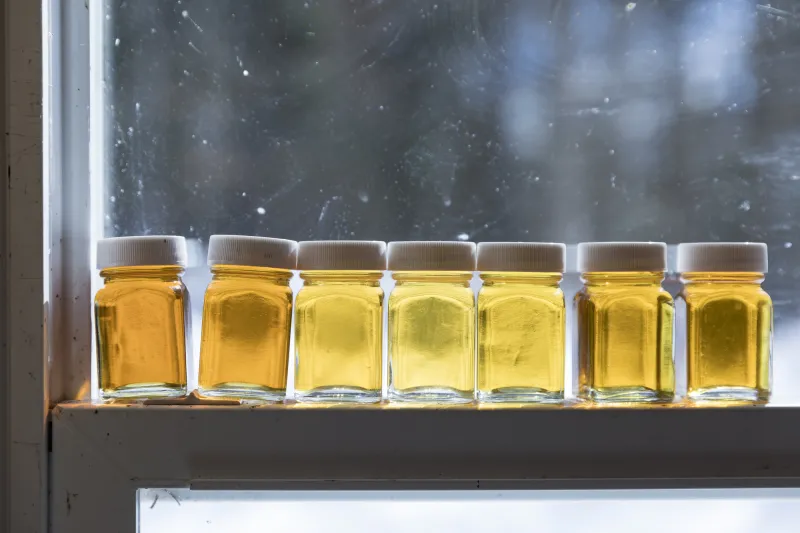
North-Rust Syrup understands that local maple syrup can get pricey, but it is their goal to not overprice their product. Return customers find even prices year after year, even if production might not have gone smoothly. If you’d like to try some North-Rust Syrup, send them a message on their Facebook page or watch for advertisements in the Tupper Lake Free Press. Or head down to The Lumberjack Inn or Larkin’s.
All things maple
If you’ve got a sweet tooth, spend the weekend in Tupper Lake learning about and eating maple syrup. If you need to burn off some of that sugar energy, take a trip to the location of A.A. Low’s former empire. Maybe later grab a maple bacon donut from Washboard Donuts on Park Street. The history and community in the maple industry is, indeed, sweet.
Family photos are courtesy of Angela Fox Rust and North-Rust Syrup.
